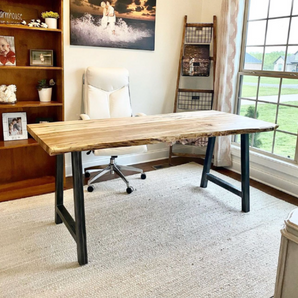Leading Patterns in Dining Room Table Legs to Elevate Your Eating Space
Leading Patterns in Dining Room Table Legs to Elevate Your Eating Space
Blog Article
An In-depth Take A Look At Table Leg Styles: Locating the Perfect Match
Selecting the appropriate eating table leg style is essential for both visual charm and useful capability. Traditional 4 legs use ageless elegance and security, while the pedestal base gives boosted legroom and a contemporary look. For those with bigger tables, trestle legs make certain tough assistance, whereas barrette legs present a mid-century modern vibe with their minimalist layout. The x-shaped legs blend modern style with enhanced security. Each of these options brings one-of-a-kind benefits, making the selection greater than just an issue of choice. Check out further to find which style completely complements your eating room and way of life.
Standard 4 Legs
Amongst the various types of table leg styles, the standard four-leg layout continues to be a timeless choice for numerous families. This timeless arrangement supplies an unified mix of functionality and aesthetic appeals, making it a seasonal fave. 4 legs supply well balanced assistance, making certain the table continues to be secure and efficient in birthing significant weight. This is specifically useful for houses that regularly organize huge celebrations or use their table for several functions, such as work or crafting.
From an aesthetic point of view, the conventional four-leg design can be easily adjusted to different indoor designs. Whether crafted from timber, metal, or a mix of products, these legs can be elaborately carved, streamlined and minimalistic, or anything in between. Their convenience enables them to complement both rustic and modern setups perfectly.
Moreover, the uncomplicated framework of the four-leg design promotes simplicity of movement and positioning within a space. Unlike more complicated bases, this style decreases obstructions, giving enough legroom for diners. In recap, the standard four-leg eating table leg style marries sustaining elegance with practical capability, making it an astute option for those looking for both type and function in their eating furnishings.
Stand Base
Commonly commemorated for its classy and space-efficient design, the stand base is a recognized choice to the typical four-leg setup in dining table leg designs. Without edge legs, diners are afforded greater flexibility of movement, making it an ideal option for round and oblong tables that promote more intimate and inclusive events.
The central column itself supplies a canvas for elaborate layouts and imaginative expressions, including an element of aesthetic interest under the table. In summary, the pedestal base integrates performance with design, making it a fine-tuned and functional option for varied eating atmospheres.
Trestle Legs
Trestle legs offer a durable and classic foundation for eating tables, identified by their straight cross-bracing and sturdy assistance beams. Originating from medieval times, this design has evolved yet retained its essential structure, making it a seasonal fave in both traditional and contemporary setups. The central trestle light beam, often supported by 2 or more vertical articles, uses outstanding security, permitting bigger table sizes without the need for additional legs.
A considerable advantage of trestle leg tables is the ample legroom they offer. Unlike tables with 4 edge legs, the lack of obstructions at the table's edges offers unobstructed area for chairs over here and diners, boosting convenience and access. This makes trestle tables perfect for suiting larger events, whether in a dining-room or a reception hall.
From rustic farmhouse to streamlined contemporary styles, trestle legs can be customized to fit private preferences. Their enduring appeal and practical advantages make trestle legs an engaging choice for those looking for both style and usefulness in their dining table.
Hairpin Legs

The allure of hairpin legs exists in their simplicity and adaptability - dining room table legs. Offered in a variety of products, consisting of steel and brass, they can be ended up in various shades to complement different indoor designs. Whether coupled with a rustic wood table top or a contemporary glass surface area, hairpin legs effortlessly blend functionality with a touch of vintage charm
Sturdiness is an additional noteworthy feature of barrette legs. Despite their delicate appearance, these legs are crafted to bear significant weight, making certain the table remains stable and safe. Furthermore, they are reasonably very easy to mount, making them a prominent choice for do it yourself fanatics and specialist furnishings makers alike.
X-Shaped Legs

Created from materials such as steel, timber, or a mix of both, X-shaped legs can be customized to match different design preferences. Steel legs typically offer a sleek and commercial feel, perfect for loft-style apartments and modern-day dining areas.
Furthermore, the design behind X-shaped legs ensures even weight circulation, reducing the threat of wobbling and enhancing longevity. This makes this content them especially appropriate for bigger dining tables that call for added support. Basically, X-shaped legs blend functional design with contemporary aesthetics, making them a timeless option for varied dining settings.
Verdict
A detailed understanding of table leg designs reveals the unique features and advantages of each style. Traditional 4 legs offer stability and timeless allure, while stand bases give legroom and a structured look. Trestle legs make certain robust support for bigger tables, and hairpin legs present a mid-century modern-day visual. X-shaped legs integrate modern style with enhanced security. Selecting the proper leg style makes sure both practical and aesthetic satisfaction in any kind of eating space.
Report this page